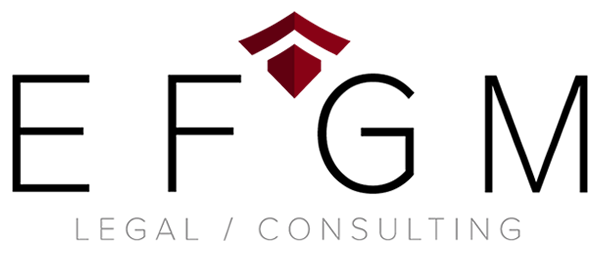
- Liability of crime and compliance entities
- The catalogue of predicate offences
- Drafting of the organizational model for the establishment of supervisory bodies
- Judicial assistance
- I vantaggi dell’adozione del Modello Organizzativo 231
- Rating di legalità
Regulatory compliance is represented by the set of measures and procedures, both organizational and managerial aimed at ensuring that the risk of violation of the reference legal context is minimized. For a company to be defined compliant, the adoption of the so-called Mocg, Organization and Management Model and the contextual establishment of the Supervisory Body whose task is precisely to supervise the correct and effective application of the Model.
The forthcoming entry into force of the so-called the crisis and business code provides for a sort of indirect obligation since it requires the governance and control organs of the company to “constantly assess- Whether the organizational structure of the company is adequate”: the first comments show the additional opportunity to adopt the model mentioned for the voluntary adoption and adhesion by the client companies to the Organizational Model 231,
The Legislative Decree 8 June 2001, n. 231 introduced the so-called administrative liability of entities (and among them the companies) for crimes committed by top management, legal representatives, directors, managers as well as by the persons, subject to their management and supervision. It supports the criminal liability of the natural person who has materially committed the offence of criminal significance in about a large range of offences, which are continuously integrated by the legislator. In concrete terms in the cd. Register of crime reports established at the component Public Prosecutor’s Office (initially restricted to the registration of natural persons), there is a special list which provides for the registration of companies even independently of the registration and investigation of natural persons.
The penalties provided by the company include the seizure and then the confiscation of the shares even independently from that of the material perpetrator of the crime. The penalty as well as pecuniary sanctions can be a disqualification nature and reach up to the commissioner of the company or the disqualification from relations with the Public Administration.
In the context of that overview, the legislator allows the company that decides to acquire it to remain exempt from liability if before the commission of the crime:
- adopted and effectively implemented an Organization and Management Model suitable for preventing the offence that occurred;
- the supervision of the functioning and observance of the models was entrusted to a body with autonomous powers of initiative and control, namely the Supervisory Body;
- he person (s) who committed the crime did so by fraudulently eluding the Organization and Management Model;
- there was no omission, inadequate or insufficient supervision by the Supervisory Body, the body in charge of control.
The catalogue of offences from which the criminal-administrative liability of entities derives has been and is constantly expanded, including, among others and by way of example:
- crimes against the Public Administration (corruption, embezzlement to the detriment of the State, fraud, computer fraud);
- corporate crimes (false corporate communications, false prospectus, illicit influence on the meeting);
- crimes relating to terrorism and subversion of the democratic order;
- crimes against the individual;
- market abuse;
- transnational crimes (criminal association, of a simple and mafia-type nature, an association aimed at smuggling foreign manufactured tobacco or illicit trafficking in narcotic or psychotropic substances, money laundering, use of money, goods or other benefits of illicit origin );
- manslaughter and serious or very serious negligent injuries, committed in violation of accident prevention regulations and the protection of hygiene and health at work;
- crimes of receiving, laundering and using money, goods or benefits of illicit origin;
- IT crimes and illegal data processing (so-called “cybercrime”);
- crimes against industry and commerce;
- crimes relating to violations of copyright;
- environmental crimes;
- corruption between private individuals;
- self-laundering;
- Some tax offences.
EFGM deals with both the complex and delicate phase of the implementation and construction of the Organization and Management Model, and, through its professionals, with the identification and availability of the members of the Supervisory Body, according to the necessary competence profiles.
The construction of the Mogc starts from a precise analysis, which consists of:
- Identification of risks (identifying in which areas or sectors of activity criminal acts may occur), cd. Risk assessment;
- Identification of the factual connotations that the criminal facts assume in the so-called Risk areas. It is followed by the definition and implementation of the control system of the identified risks (so-called “protocols for planning the training and implementation of decisions of the body” according to Article 6 of Legislative Decree 231/01), with the release of the Organizational Model, divided into a general part, special part and the so-called Corporate Code of Ethics.
The implementation of the control system presupposes the evaluation of the system that may already exist within the Company. Its adaptation, if it is not suitable – both in the abstract and in its concrete implementation – to effectively mitigate and reduce to identified risks are acceptable, as it is unthinkable to build a system capable of eliminating the possibility of a natural person breaking the law.
EFGM supports the company, possibly under investigation, throughout the criminal proceedings, boasting specific experience in the sector of its criminal lawyers and technical consultants, both in the case in which the client is not yet equipped with the organizational model and if that the same Model is judged ineffective.
Non va sottaciuto come l’adozione del Modello consenta una serie di indubbi vantaggi, tra i quali, ad esempio, quello di ottenere sgravi Inail attraverso la riduzione della tariffa del tasso medio di prevenzione, che, normalmente, per il primo biennio è dell’8% e che può giungere, in alcuni casi, sino al 28%.
Tale risparmio è riservato alle aziende che eseguono interventi per il miglioramento delle condizioni di prevenzione e tutela della salute e sicurezza nei luoghi di lavoro, tra cui l’adozione del Modello Organizzativo, in aggiunta a quelli previsti dalla normativa in materia.
Il Mogc è tra i principali presupposti per ottenere il cd. Rating di legalità, di cui alla prossima sezione.
L’adozione del Mogc, inoltre, contribuisce a conferire alla società una patente di ulteriore legalità, essendo uno dei fondamentali presupposti onde ottenere, da parte dell’Agcm, Autorità Garante per la Concorrenza ed il Mercato, il cd. rating di legalità (istituito con L. 62/12, e definitivamente attuato a mezzo della Delibera dell’Agcm 15 maggio 2018, n. 27165 al fine di promuovere l’introduzione di principi etici nei comportamenti aziendali, chiudendo il cerchio della compliance normativa: l’elenco delle imprese che lo hanno ottenuto è costantemente aggiornato e pubblicato sul sito dell’Autorità.
Il rating di legalità è un indicatore sintetico del rispetto di elevati standard di legalità da parte delle imprese che ne abbiano fatto richiesta.
Possono richiedere l’attribuzione del rating le imprese (sia in forma individuale che societaria) che soddisfano cumulativamente i seguenti requisiti:
- sede operativa in Italia;
- fatturato minimo di due milioni di euro, nell’esercizio chiuso nell’anno precedente a quello della domanda;
- iscrizione nel registro delle imprese da almeno due anni alla data della domanda;
- rispetto degli altri requisiti sostanziali richiesti dal Regolamento.
Tale riconoscimento prende la veste di un punteggio compreso tra un minimo di una e un massimo di tre “stellette”.
L’impresa richiedente ottiene il punteggio base ★, qualora rispetti tutti i requisiti di cui all’articolo 2 del Regolamento attuativo in materia di Rating di Legalità.
Il punteggio base potrà essere incrementato di un “+” per ogni requisito aggiuntivo che l’impresa rispetta tra quelli previsti all’art. 3 del Regolamento.
Il conseguimento di tre “+” comporta l’attribuzione di una stelletta aggiuntiva, fino a un punteggio massimo di ★★★.
Le aziende interessate dovranno presentare la domanda utilizzando l’apposita piattaforma Webrating.
A tal fine, l’impresa deve preliminarmente registrarsi alla piattaforma e, una volta completata la registrazione, accedere al sistema, procedere alla compilazione della domanda e successivamente al suo invio, seguendo le relative istruzioni presenti su questo stesso sito.
Il rating di legalità ha durata di due anni dal rilascio ed è rinnovabile su richiesta.
Non ci sono costi per le imprese che vogliono ottenere il rating di legalità.
Le imprese che avranno ottenuto il rating, godono di una posizione privilegiata, ad esempio rispetto al mondo bancario e finanziario, con una particolare attenzione alle operazioni richieste da una società, cui è stato conferito il rating, dovendo, qualora decida di rifiutare l’operazione, rendicontare alla Banca d’Italia, spiegando le ragioni di tale diniego: “Gli istituti di credito che omettono di tener conto del rating attribuito in sede di concessione dei finanziamenti alle imprese sono tenuti a trasmettere alla Banca d’Italia una dettagliata relazione sulle ragioni della decisione assunta. (Cfr. art. 5 ter, L. 62/12)”.
Lo stesso consente, dunque facilitazioni di accesso al credito ed un canale privilegiato nella maggior parte dei badi pubblici, che riservano una quota di finanziamento alle imprese con il rating.

